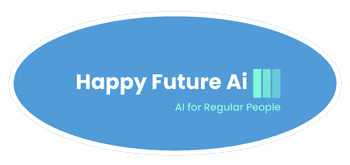Empowering Urban Safety: The Role of AI in Crime Prevention

The implementation of Artificial Intelligence (AI) in urban environments to tackle crime is revolutionizing public safety protocols. This technology’s prowess in sifting through data, identifying trends, and foreseeing hazards has not only expedited the crime-fighting process but has also opened a gateway for innovation in securing city landscapes.

Innovative AI Solutions Enhancing City Safety
Elevated Surveillance Mechanisms: The incorporation of AI into surveillance systems marks a significant stride in urban safety. “AI-powered surveillance is not about watching more; it’s about watching smarter,” states Dr. Alex Richardson, a leading expert in AI and public security. These intelligent systems can autonomously analyze footage for unusual activities or match faces against criminal databases instantaneously, ensuring rapid response to potential security breaches.
Predictive Policing and Crime Hotspots: Leveraging historical crime data, AI algorithms can forecast crime hotspots with remarkable accuracy. Professor Maria Gomez, who specializes in criminology and AI applications, notes, “Predictive policing allows law enforcement to be strategic rather than reactive, using data-driven insights to prevent crime before it occurs.” This method not only augments urban security but also optimizes resource allocation across high-risk zones.
AI Assistants in Law Enforcement: The deployment of AI assistants is transforming the operational dynamics for officers on the ground. These advanced systems can swiftly parse through databases to furnish officers with immediate insights about individuals or vehicles of interest. “AI assistants act as a force multiplier, enhancing the efficacy of law enforcement efforts,” explains John Carter, a former police chief turned security consultant.
Monitoring Social Media for Threat Detection: AI’s capability to monitor social media for potential threats is an invaluable asset in preemptive crime prevention. Cybersecurity expert Linda Huang remarks, “Social media platforms are vast data troves. AI’s ability to filter and identify threats among this data is a critical tool in our security arsenal.”
Navigating Challenges and Ethical Dilemmas
The path to integrating AI in public safety is fraught with challenges, notably privacy concerns and the potential for bias. “While AI can significantly enhance our security infrastructure, it’s imperative to strike a balance between safety and privacy,” asserts Dr. Richardson. The call for transparency in AI algorithms is loud, aiming to prevent biases and ensure equitable law enforcement practices.

Global Examples: AI’s Impact on Public Safety
Cities worldwide are harnessing AI to fortify public safety. London, for instance, has pioneered the use of facial recognition to swiftly identify suspects in crowded places. “The results in London have set a benchmark for AI in public safety,” states Professor Gomez. Chicago’s adoption of predictive policing models, meanwhile, has led to a notable decrease in crime rates, showcasing the practical benefits of AI-driven strategies.
Looking Forward: The Evolution of Urban Safety
The synergy between AI, the Internet of Things (IoT), and 5G networks is paving the way for a new era in urban safety. This integrated network promises to deliver sophisticated real-time monitoring and response capabilities. “The potential of AI in public safety is boundless. As technology advances, so too will our ability to protect and serve our communities,” predicts Carter.
Conclusion
The use of AI in combatting urban crime is a significant advancement in ensuring public safety. Through smart surveillance, predictive policing, AI-assisted law enforcement, and social media monitoring, AI is proving indispensable in making cities safer. Yet, as we navigate this technological journey, it remains crucial to address ethical concerns, ensuring that AI’s application in public safety upholds the principles of privacy and fairness.







